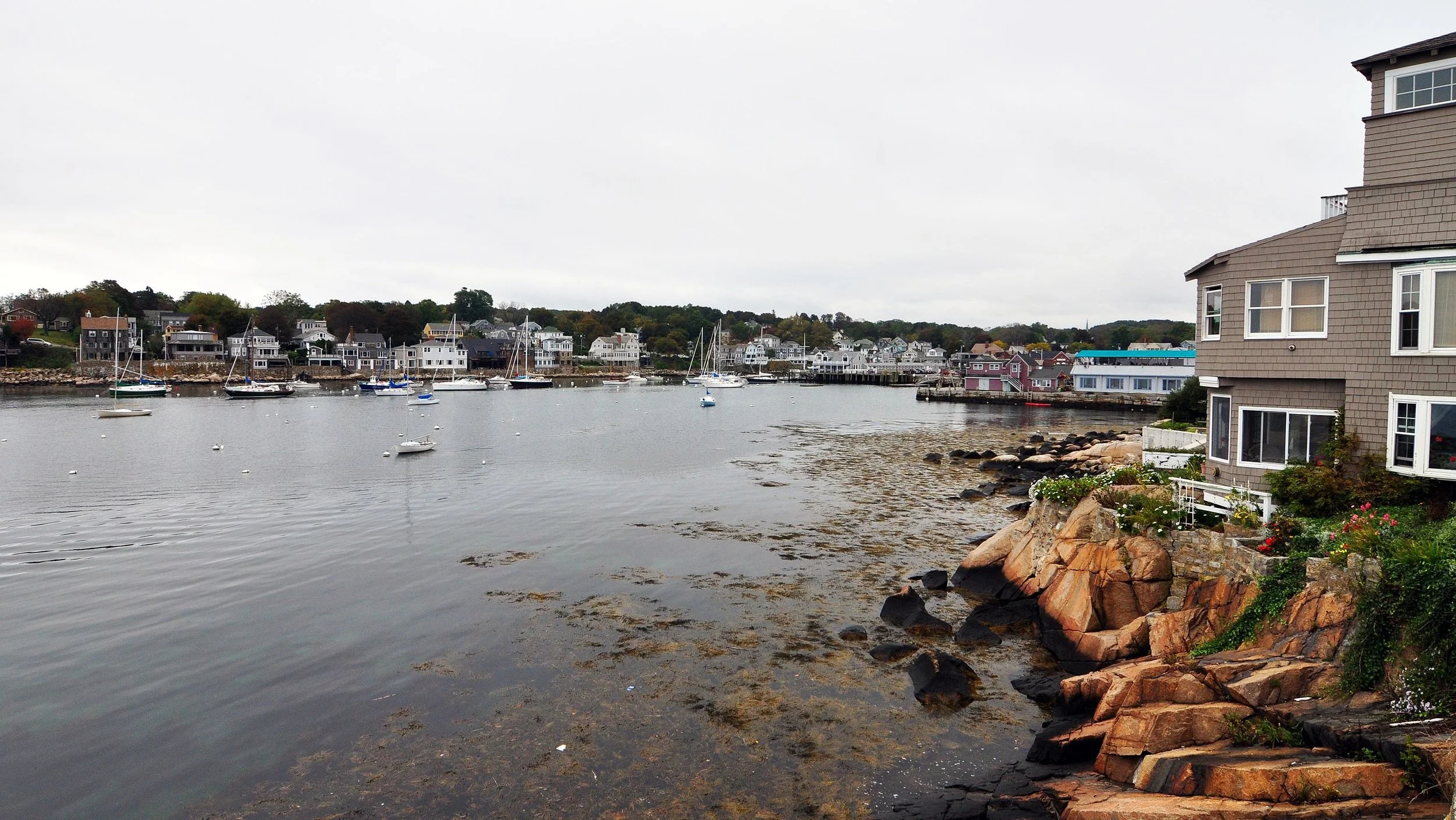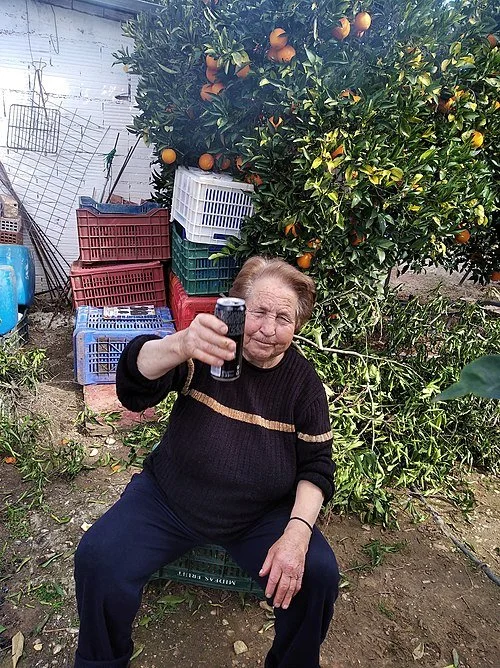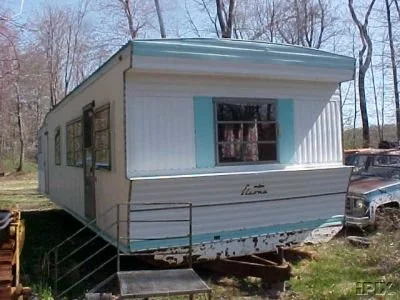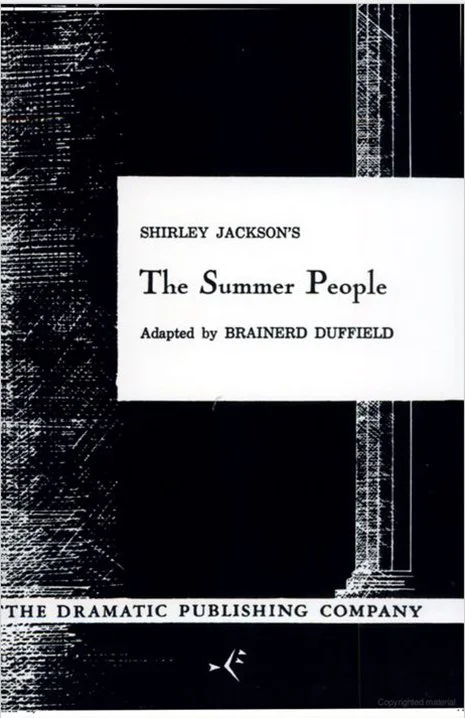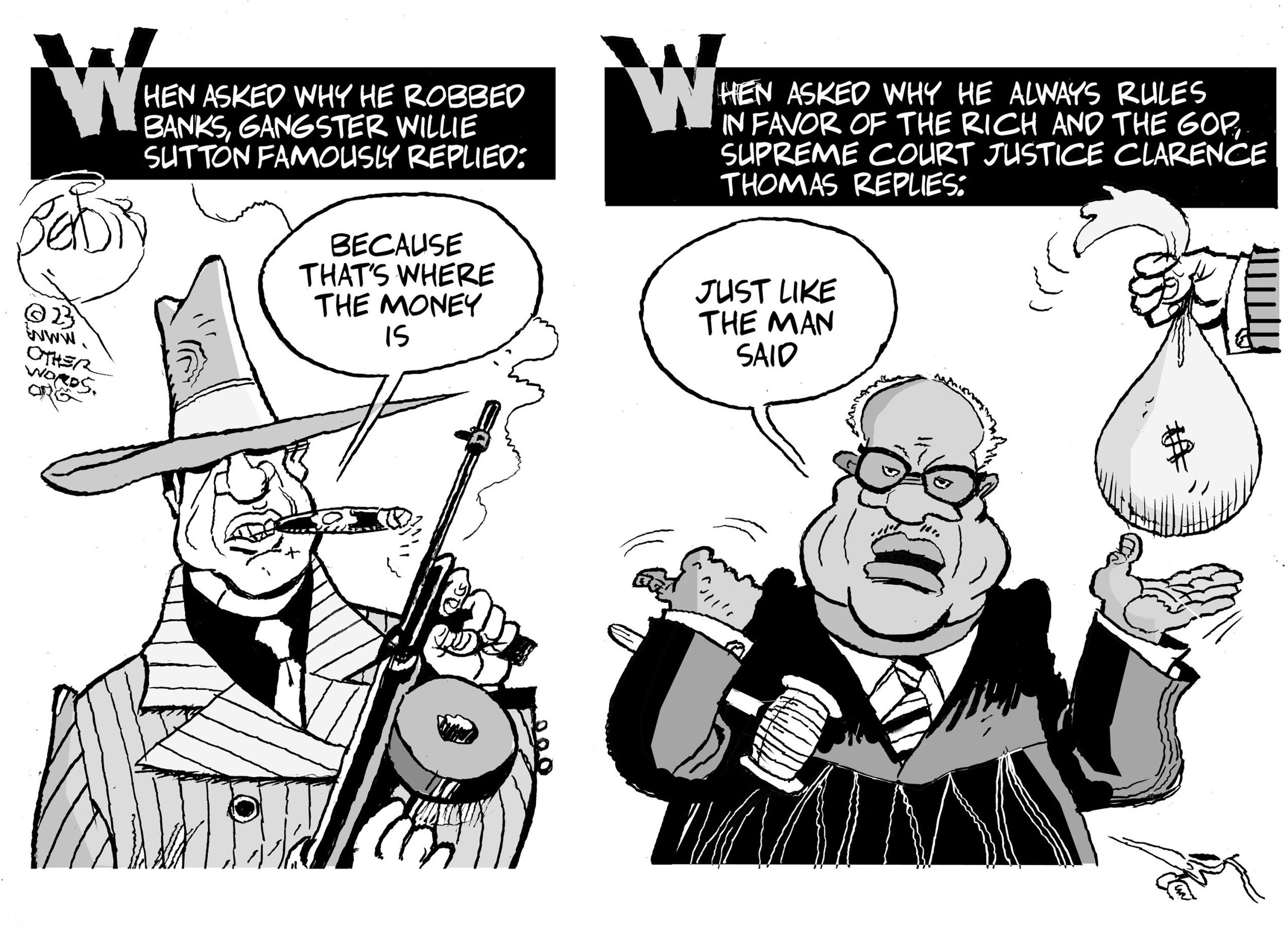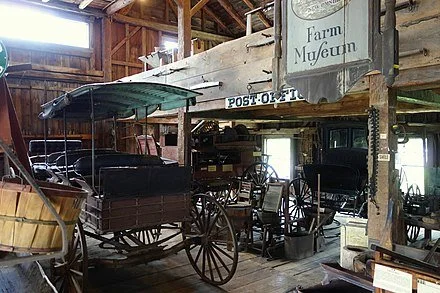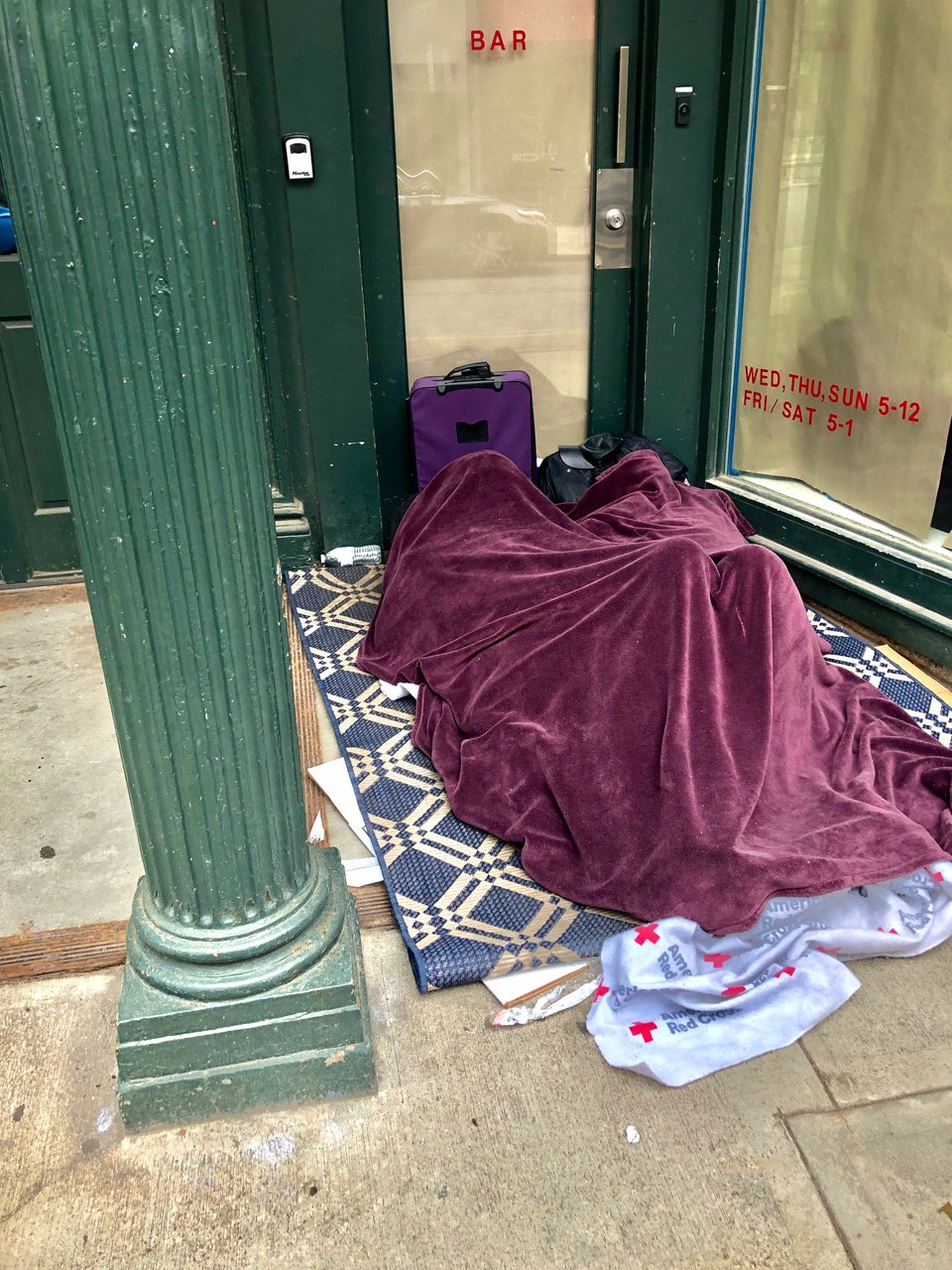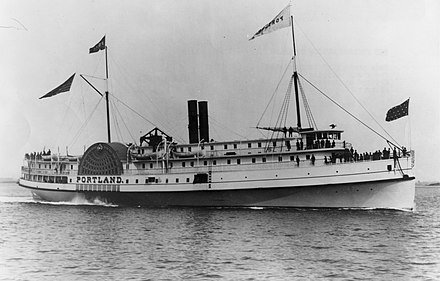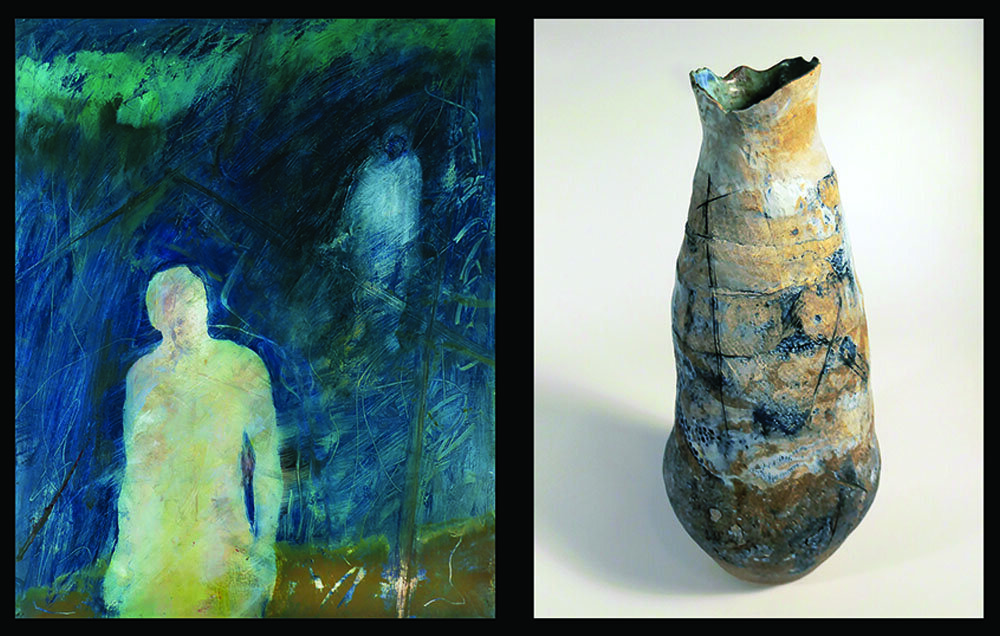
‘Hairy with violets’
“I am fleshed at smaller sports, and grow in time
into the mineral thick fell of earth; Vermont
hairy with violets, roses, lilies and like
minions and darlings of the spring, meantime
working wonders, rousing astonishments….”
—From “West Topsham,’’ by John Engels (1931-2007), a Vermont-based poet and teacher. West Topsham is a village in the town of Topsham, Vt.
Town hall in Topsham
No refrigeration needed
“Shelf Life” (acrylic on Yupo), by Boston-based artist Wilson Hunt, at Alpers Fine Art, Rockport, Mass.
In Rockport
‘Long as you don’t inhale’
“Finding Atmosphere” (ceramic, wood, glaze, gold leaf and wire), by Ethan McGrath, in the show “Essence: 2023 Senior Exhibition,’’ at the Iris and B. Gerald Cantor Art Gallery at the College of the Holy Cross, Worcester, through May 26.
— Photo courtesy of Iris and B. Gerald Cantor Art Gallery
The show brings together the artwork of 13 senior visual-art students — Christian Bachez, Jianing Bai, Brooke Bailey, Aisena Cekrezi, Unique Grimes, Teaken Haggerty, Obiamaka Igwenagu, Ethan McGrath, Kate Nedorostek, Kendra Offermann, Emily Skilton, Noelle Ventura and Olivia Wiatrowsk. The work encompasses a wide range of mediums (and themes) from sculpture, to murals and mixed-media.
xxx
“Pollution,’’ by Tom Lehrer (born 1928), American musician, singer-songwriter, satirist and math professor, including at Harvard, MIT and Wellesley College
If you visit American city,
You will find it very pretty.
Just two things of which you must beware:
Don't drink the water and don't breathe the air!
Pollution, pollution!
They got smog and sewage and mud.
Turn on your tap
And get hot and cold running crud!
See the halibuts and the sturgeons
Being wiped out by detergeons.
Fish gotta swim and birds gotta fly,
But they don't last long if they try.
Pollution, pollution!
You can use the latest toothpaste,
And then rinse your mouth
With industrial waste.
Just go out for a breath of air
And you'll be ready for Medicare.
The city streets are really quite a thrill -
If the hoods don't get you, the monoxide will.
Pollution, pollution!
Wear a gas mask and a veil.
Then you can breathe,
Long as you don't inhale!
Lots of things there that you can drink,
But stay away from the kitchen sink!
The breakfast garbage that you throw into the Bay
They drink at lunch in San Jose.*
So go to the city,
See the crazy people there.
Like lambs to the slaughter,
They're drinking the water
And breathing [cough] the air!
Not really revolutionary
Montague Center in 1907
“New Englanders began the Revolution not to institute reforms and changes in the order of things, but to save the institutions and customs that already had become old and venerable with them; and were new only to a few stupid Englishmen a hundred and fifty years behind the times.”
— Edward Pearson Pressey, in his book History of Montague (Mass.): A Typical Puritan Town (1910)
Felicia Nimue Ackerman: ‘Don’t call me older’
“Old Age Be Not Sugarcoated’’
(First appeared in Light, https://lightpoetrymagazine.com/)
Your language has me groaning.
I hate to be a scold,
But please don’t call me older
Instead of simply old.
And even worse is senior.
It makes me quite irate.
I haven’t been a senior
Since 1968!
— Felicia Nimue Ackerman is a Providence-based poet and a professor of philosophy at Brown University.
Llewellyn King: America is desperate for skilled tradespeople
WEST WARWICK, R.I.
There is a terrible shortage of people who fix things. I am thinking of electricians, plumbers, glaziers, auto mechanics, and many more skilled workers who keep life livable and society running.
It is frustrating if you can’t get a plumber when you need one. But the skilled- workers shortage has much larger consequences than the inconvenience of the homeowner. The very rate of national progress on many fronts is being affected.
More housing is desperately needed, but architects tell me that some new construction isn’t happening because of the skilled-workers shortage. Projects are being shelved.
The problem in electric utilities is critical — and interesting because they offer excellent pay, retirement and health care and still, they are falling short of recruits. They are very aware that many of their workers will be retiring in the next several years, adding to the problem. One utility, DTE, in Michigan, has been training former prisoners in vegetation control — the endless business of trimming trees around power lines.
Auto dealerships are scrounging for mechanics, now euphemistically called “technicians.”
Skilled workers are in short supply for the railroad and bridge industries. Many industries are prepared to offer training.
The need is great and it is having a quietly crippling effect on national prosperity.
President Joe Biden has been almost ceaselessly promoting solar and wind generation as job creators. Someone should tell him there is a severe shortage of those same electricians, pipe fitters, wind farm erectors and solar- panel installers.
The skilled-workers shortage has been worsening for some time, but it is now palpable.
There are contributory factors that have been building: The end of the draft meant an end to a lot of trade schooling in the military. Many a youth learned electronics, motor repair or simply how to paint something from Uncle Sam. That’s the generation that’s now retiring.
Then there is the education imbalance: We encourage too many below-average academic students to go to college. It is part of the credentialing craze.
Those less suited to academic life seek easier and easier courses in lesser and lesser colleges just to come out with a bachelor’s degree — a certificate that passes for a credential.
The result is a glut on the market of workers with useless degrees in such things as marketing, communications, sociology and even journalism. I can tell you that if you arrive in college in need of remedial English, your future as a journalist is likely to be wobbly.
Since childhood, I have been impressed with people who fix things: People like my father. He fixed everything from diesel engines to water well pumps, burst pipes and sagging roofs.
Men, and some women, of his generation worked with their hands but they were, in their way, Renaissance people. They knew how to fix things from a cattle feeder to a sewing machine, from a loose brick in a wall to a child’s bicycle to a boiler.
The work of fixing, of keeping things running, isn’t stupid work; it involves a lot of deduction, much knowledge and acquired skill.
Men and women who fixed things were at one with men and women who made things, often bound together in a common identity inside a union.
Think of the great names of the unions of the past, and the sense of pride members once took in their belonging: the International Ladies’ Garment Workers’ Union, the Teamsters or the United Autoworkers. You had work and social dignity. You weren’t looked down upon because you hadn’t been to college.
We aren’t going to quickly bring back honor to manual work or reverence for the great body of people who keep everything running. So we might look to the hundreds of thousands of skilled artisans who would do the work if they could enter the United States legally. Yes, the migrants milling at the southern border. Many skilled welders, plumbers and masons are yearning to cross the border and start fixing the dilapidated parts of this country.
The owner of a clothing factory told me that she was desperate to find women who could sew. She said that it is a skill that has just disappeared from the American workforce. A landscape contractor in Washington told me he would close without his Mexican workers.
A modest proposal: Let us write immigration law on the basis of who is really needed. Add to this a work permit dependent on fulfilling certain conditions. You would soon find company recruiters mingling with the border agents along the Rio Grande.
And we would lose our fear of a burst pipe. Help is just a frontier away.
Llewellyn King is executive producer and host of White House Chronicle, on PBS. His email is llewellynking1@gmail.com, and he’s based in Rhode Island and Washington, D.C.
Linda Gasparello
Co-host and Producer
"White House Chronicle" on PBS
Mobile: (202) 441-2703
Website: whchronicle.com
Maine country place
“When Daddy’s downcellah busy with his lathe, I go to the edge of the grass to get a look at the Beans. The Beans’ mobile home is one of them old ones, looks like a turquoise-blue submarine. It’s got blackberry bushes growin’ over the windows.’’
— From The Beans of Egypt, Maine (1985), by Carolyn Chute (born 1947)
Maybe never
“Call Home” (still from 16 mm film), by Elise Cohen, at the Emerson (College) Contemporary Gallery show “MFA Thesis Projects,’’ in Boston, through May 14
— Photo courtesy: Emerson Contemporary Gallery
The gallery says that Cohen’s work “incorporates mixed media to explore themes of transmission, alienation and memories though 8 mm and 16 mm home movies and audio recording.’’
The art of sound in New Bedford
At the New Bedford Art Museum, through June 4:
“Sound in Space, Sound in Place’’ is a survey of contemporary sound art, foregrounds sound and listening as powerful shapers of everyday experience and draws attention to sound’s unique properties as an artistic medium.
The exhibition features a collaborative work by established sound artists John Driscoll and Phil Edelstein—the richly exploratory sound installation “Cluster Fields” (2018–2023)—as well as “New Bedford Soundscape,’’ a crowdsourced collection of audio recordings by New Bedford residents; “Sonic Textures of Place,’’ experimental sound works by UMass Dartmouth students in Professor Walker Downey’s Spring 2023 sound art seminar; “NBWaves,’’ by Scapeghost, and “Whirly Chorus,’’ by Tess Oldfield.
Scott Bishop, aka Scapeghost, performs his six-song “NBWaves,’’ on April 28, 6-8p.m.
Where will the coastal year-rounders live?
Stonington waterfront in1915
Aerial view of fancy summer resort town Camden, Maine, from the harbor
—Photo by King of Hearts
Adapted from Robert Whitcomb’s “Digital Diary,’’ in GoLocal24.com
‘Many coastal communities in New England face severe housing shortages for year-round residents of modest means. Around here, Nantucket, Martha’s Vineyard and Block Island are infamous for this problem.
Consider Stonington, Maine, on Deer Isle. There, 80 percent of its shorefront is now owned by non-residents (mostly summer people), as are 56 percent of that fishing (mostly lobsters) port’s downtown properties, according to a report in the Portland Press Herald
The usually affluent summer folks bid up real estate prices to levels unaffordable to most year-rounders.
So where will the carpenters, yard-work people, plumbers, electricians and schoolteachers live? Perhaps some elderly summer people will leave their summer McMansions to towns to be converted into affordable housing. Just joking. But something must be done if these towns are going to have enough of the locals who make communities viable for year-round and summer people. That includes zoning changes and/or having states subsidize the construction of new housing in some places.
Wave art
“Wave” (digital photograph), by Cape Cod-based artist Mary Doering, in the National Association of Women Artists’ group show “Contrast,’’ at Galatea Fine Art, Boston, May 5-28.
Wave action at the Cape Cod National Seashore
‘Resolute optimism’ in face of climate threats
“Feeling the Heat” (thermal imaging art), by Adam Sebire, in the multimedia show “Points of Return,’’ at the Umbrella Arts Center, Concord, Mass., May 1-June 25.
The Umbrella Visual Arts program, in collaboration with A La Luz, is featuring the work of 27 international artists, in the first physical exhibition of the acclaimed online exhibition of the same name.
The arts center says:
“This environmental art exhibition has The Umbrella divided into themed spaces. A journey has been mapped out to give visitors fresh and engaging insights into wide-ranging aspects of the climate crisis, with its end destination that of resolute optimism. For while it may seem that we are racing toward a closing act, as our planet’s average temperature rises year-to-year, solutions remain within sight. We have not yet reached that dreaded ‘point of no return’ and artists can present scientific data in new ways. Through dynamic display and crossing several artistic disciplines, this show provides commentary, reflection, and creative restorative strategies.’’.
Tucker Carlson in Maine
Bryant Pond (aka Christopher Lake), in the western Maine town of Woodstock. Ousted Fox News commentator Tucker Carlson has a house in the Bryant Pond Village section of Woodstock, where he has done some shows. He has often said that it’s his favorite place and noted that his family has vacationed there for more than 40 years. His presence there has not been without controversy.
— Photo by Zendry423
Monument commemorating that Woodstock was the last location in the United States still using the crank telephone system until the early 1980s.
Lindsay Koshgarian: What your federal taxes pay for
Via OtherWords.org
HADLEY, MASS.
Many of us rushed to file our federal taxes before this year’s April 18 deadline. While we all hope for a refund to help pay the rent or cover a vacation, we also want our taxes themselves to pay for worthwhile things.
Every year, my project at the Institute for Policy Studies creates a tax receipt to help people see what their taxes paid for. Here’s what we learned this year.
On the one hand, our federal income taxes fund a lot of good, popular things. The expansion of Medicaid under the Affordable Care Act has saved lives. Food Stamps (also known as SNAP) feed millions of hungry children and families. And Medicare will be there for all of us as we age.
On the other hand, there’s a lot that we might want to do differently.
You probably expect that some of your federal income taxes go to the military. But did you know that the average taxpayer spent $1,087 on private military contractors alone? That’s more than double the $474 that went towards paying the troops.
Unfortunately, that means you’re subsidizing multimillion-dollar salaries for contractor CEOs while many troops rely on food stamps. (You also help pay for those.)
What’s more, a lot of Pentagon spending funds things that aren’t popular at all.
Despite lacking any clear purpose, the war in Afghanistan went on for 20 years and cost more than $2 trillion. It was a clear, tragic failure that the vast majority of us were ready to end well before the U.S. pullout.
Yet Pentagon leaders never had to seriously account for what went wrong. Instead, Congress gave the Pentagon and its contractors more money when the war ended — the opposite of what most of us would expect.
While throwing good money after bad at the Pentagon, we’re not investing enough in domestic programs that actually work.
For example, it’s conventional wisdom that an ounce of prevention is worth a pound of cure. But the average taxpayer paid $20 for federal prisons compared to just $11 for programs to end homelessness, despite the fact that stable housing has been shown to reduce crime.
Then there’s the Child Tax Credit.
This is a shining star among government programs, one that helped cut child poverty in half when it was expanded during the pandemic. It’s hard to ask for better results than that.
The average taxpayer paid $345 for the Child Tax Credit in 2022. If you have children, it’s likely that you got more than that from getting the Child Tax Credit yourself. But conservatives in Congress let the expansion expire in late 2021, abandoning a policy that worked and allowing child poverty to climb.
Scientists are united on the fact that we need to cut carbon emissions now or face dire consequences.
Yet the average taxpayer paid less than $7 for renewable energy and energy efficiency programs in 2022. They got charged more than 10 times that amount for nuclear weapons, which themselves present an existential threat to humanity.
Most of us also support programs for cleaner air and water, which have saved millions of lives and trillions of dollars. Yet the average taxpayer paid less than $22 for the Environmental Protection Agency, which was tasked with responding to the horrific chemical spill in East Palestine, Ohio, that threatened communities in multiple states.
The same taxpayer paid five times as much for a single Pentagon contractor, Lockheed Martin, maker of the F-35 jet fighter. Unlike our successful clean air and water programs, the F-35 fighter is notorious for its failures and expense.
So, let’s hope that you got that refund and use it for something worthwhile. But let’s also demand that our government prioritize programs that are worthwhile and make our lives better — and jettison the ones that don’t.
Federal budgeting expert Lindsay Koshgarian, based in Hadley, directs the National Priorities Project at the Institute for Policy Studies.
Historical coaches and farming implements in the Hadley Farm Museum
We all feel the ‘presence of absence’
“Presence of Absence: Looking In + Looking Out #1” (pigment print, lucite oil and wood), by Boston-based artist Jennifer Liston Munson, in her show “Presence of Absence,’’ at Kingston Gallery, Boston, July 4-July 30
The gallery says:
”Ghostly figures in found photographs of unnamed relatives from Jennifer Liston Munson’s unknown past occupy a landscape of inherited memory. Photographs are buried in resin, holding the figures in time and space, allowing them to look out as we look in. Liston Munson asks the viewer to linger on these elegiac images as an act of resurrection, to substantiate the precariousness of personal histories and the delicate process of perception.
“In some of the pieces, Liston Munson makes the landscape the subject; spaces, trees, and enigmatic watery pools that remain while the bodies they contain dissolve to time, as layers of paint ooze from the edges to mark the art-making process and the past. Other works look at architecture and history close up, making the past present. A series from an interior room of the Alcazar in Toledo, Spain captures bullet holes in worn wallpaper caught in the crossfire of the Spanish Civil War. New sculptural towers layer colorized resin blocks that obscure buried images of objects normally held in museum vitrines, detached from their cultures of origin for eternity.’’
Ocean Spray’s ‘Planet, Product, People, Prosperity’ pillars
Cranberry harvest time in Kingston Mass.
— Photo by Mathcar
Edited from a New England Council report.
Ocean Spray recently released its Environmental, Social and Governance (ESG) Report, emphasizing its four pillars of Planet, Product, People and Prosperity.
In the inaugural report, Ocean Spray explains and analyzes the company’s ESG work and solidifies its alignment with sustainability and equity. Ocean Spray is an agricultural cooperative that works with 700 family farmers from the United States, Canada and Chile and sells its products in more than 100 countries. In the report’s materiality assessment, Ocean Spray illustrates the company’s priorities of “Generating Economic Value for the Cooperative, Product Information and Labeling, Product Safety and Quality, and Climate Change and GHG Emissions.”
“While the report itself may be a first for our organization, it represents more than 90 years of rich history—an always-present commitment to the environment, championed by the incredible people that have shaped our company for generations,” said CEO Tom Hayes. “One of the hallmarks of our cooperative structure and business practices, throughout our history, has always been sustainability. It is in our DNA. Today, our promise is to advance on this journey—to leverage holistic ESG strategy into actionable results, and further connect our farms to families for a better life.”
xxx
Ocean State, a growers’ cooperative now based in Middleborough, Mass., in southeastern Massachusetts’s cranberry-bog region, was formed in 1930, in Hanson, Mass., by three cranberry growers who wanted to expand their market. Led by growers Marcus L. Urann, Elizabeth F. Lee and John C. Makepeace, the cooperative worked to develop more cranberry-based products beyond cranberry sauce and cranberry juice cocktail. (A.D. Makepeace Company, one of the original founders of Ocean Spray, has been in continuous operation since the late 19th Century and is the world's largest grower of cranberries.)
“The Cranberry Harvest on the Island of Nantucket,’’ 1880 oil painting by Eastman Johnson
Homeless and classically draped
Photo and text by William Morgan
It’s 11 on a Saturday morning in downtown Providence, and someone is sleeping in. This stretch of Chapel Street between Grace Church and the Providence Performing Arts Center has two or three encampments, where building-entrance alcoves provide a modicum of shelter from the elements.
The sadness and embarrassment of homeless people, and the failure of a supposedly enlightened city to take care of its marginalized and less fortunate, tear at one’s heartstrings.
Whatever the issues around social conscience and civic breakdown, some credit is due to this intrepid street denizen. He or she is wrapped in an ecclesiastical purple blanket, like a giant burqa without eye holes. The draping of the fabric recalls classical Greek statuary, such as the Elgin Marbles, from The Parthenon.
As I passed, from a tent pitched in the next entryway, a female voice wafted out, “Have a nice day.’’
William Morgan is an architecture writer and historian based in Providence. His latest book, Academia: Collegiate Gothic Architecture in the United States, will be published in October.
Refashioning ‘Chill & Dream’ for the post-COVID era
"It's really an amalgamation of ideas, experience, and forward momentum put into action," says the DJ who goes by the name Braintree Jim. He will be presenting a new music show on Sunday, April 30, on WOMR, the community radio station based in Provincetown, Mass.
The DJ was the host of a WOMR show that he conceived and hosted called Chill & Dream. "That show," he explains, "was born out of the days during the peak of the pandemic when people were confined to their homes and apartments, and constricted from social interactions on a massive scale. I think people were looking for an escape. The Chill & Dream program proved to be the perfect companion in those circumstances. The show was meant to take you to another place, in sentiment and mood. I think it captured that zeitgeist very well."
"The pandemic will likely be the defining event of our time. While the immediacy of it is starting to wane, it was dramatic and disruptive -- so many lives lost and shattered. A tragedy that still reverberates today. But we're coming out of it. There's a growing sense of moving on... there's a feeling or renewed energy. So, I wanted to reimagine, reboot, and reincarnate the old show into something new and vibrant. Target Ship Radio is the vehicle that taps into this perception."
Braintree Jim says he will not abandon the core principles of the old show, what he describes as "aural escapism" and "sonic sanctuary." The new show will be anchored in so-called "RIP Fusion," or rock, indie and pop. "That certainly constitutes the core," he allows. "I'm also really interested in discovering new -- and old -- sounds that are rooted in strong rhythm and melody. If anything, I'm expanding the sonic palette of the Chill show. I hear more brass -- the exaltant sound of horns. When you bring horns into a song, the molecules start moving differently. The mood changes. Whether it's a triumphant march or a lush interlude."
In addition to placing some soul, R&B-infused dynamics into the new show, he looks to flavor it with some world music, too. "There is so much good world music that embraces these larger ideas, that I'm excited to ferry them into the programming. I think those songs that I play will be accessible and pleasurable to a radio audience. I like the promise of the possibilities."
And what to make of the name of the show?
"We're seafaring creatures. Well before ubiquitous technological advances, we were on the go. And I think maritime vessels have a universal connection with humankind. We're fascinated by seafaring craft, whether it be for commercial or pleasure or, dare I say it, for military purposes. And they have particular resonance for people of Cape Cod."
Target Ship Radio, as a name, the DJ says, is inspired by the old target ship that for decades was visible in Cape Cod Bay, just off Eastham and Orleans. The Navy used it for target practice from the air after World War II. Operations ceased in the 1970s and the ship has since rusted away; its remnants are now only visible at very low tides, just off New Found shoal. He remembers it as "an iconic image captured in photography and artwork, and now collective memories. I wanted to pay homage to something that was such a vivid presence for those of us who spent time along the beaches back then. For me, it captures the past really well. And many still have this romantic attachment to it. I still recall witnessing those bombing runs."
The name also tips a nod to the influential pirate radio stations that sprouted up in the U.K. in the 1960s. "What a wonderful history, that pirate radio movement!", Braintree Jim declares. "I find that independent spirit and mass-audience appeal of pirate radio to be exhilarating. I'll try to bring that to the new show. Radio has a great history here. More than 100 years ago, in Wellfleet, Marconi sent a message from his Cape Cod station, the first radio transmission to cross the Atlantic from the United States. And here we are today, not far from those grounds, still trying to connect with people via radio and other means. How cool is that?"
"I also like the idea of a ship as a metaphor. Ships are about motion and movement. Coming and going. A voyage. The future and past are immediately present at sea. Ideally, I will take people on a new musical journey. That's the goal. And playing old and new music fits into the larger narrative."
Braintree Jim anticipates that there will be some changes or, as he phrases it, some mid-course adjustments. He expects to feature new segments that include playing classic, largely forgotten, albums in their entirety. And he also looks to see how he can pour listener playlists into the show. "I'm intrigued by playlists," he insists. "There are everywhere. Anybody can make one. There are algorithms to help curate them, and I would’t be surprised if AI isn't already spitting them out. I'm interested in cracking the glass on people's phones and getting inside them as the human face and human soul behind those lists. Part of my mission isn't to thwart them but to embrace them by allowing listeners to submit their ideas. I think engaging listeners in this way is a bit experimental but it's a way to bring listeners on board, so to speak." He also plans to occasionally interview artists, musicians and authors. One guest is already tentatively booked. Local author and historian Don Wilding will soon have a new book published. Cape Cod and the Portland Gale of 1898 tells the story of the fearsome late November storm that devastated the New England coast, including Provincetown Harbor. It was a storm by which many future storms were measured against. The story centers on the steamer Portland, which sank to the depths of Massachusetts Bay off Cape Cod, claiming nearly two hundred lives.
The inaugural Target Ship Radio show airs on Sunday, April 30, from 1-4 p.m. It can be heard on 92.1 FM-Provincetown and 91.3 FM-Orleans, and streaming live on womr.org. You can also hear it on the new WOMR app.
The S.S. Portland
‘A country seen in dreams’
“Turn Back” (oil on panel); “Crossing” (mixed stoneware clay), by Elizabeth Strasser, in her show “Some Other Country,’’ at Bromfield Gallery, Boston, through April 30.
The show description:
“These paintings evolved from a sense of unease, bred by recent events. The paintings do not present a particular memory or scenario but an emotional response, a reaction to a sense of disbelief and dislocation. The paintings were curative, a remedy for and revelation of the essence of my lived experience.
“In the paintings an atmospheric landscape surrounds a naked or mysteriously cloaked figure. Their backs are turned away from the viewer, the faces obscured. Each figure stands alone or in ambiguous relation to another figure. The locations are unspecified. This is ‘some other country’ – a country seen in dreams.
“The ceramic pieces function as a further exploration of the paintings. With special emphasis on surfaces, the vessels were created by forming, carving and adding clay pieces and mineral additives. They carry the emotional intensity formed by the mysterious ceramic alchemy of earth, water and fire.’’




